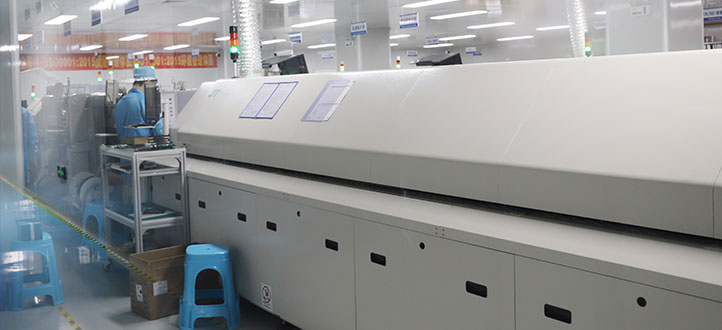Introduction of SMT reflow soldering process?

PCB assembly is a crucial part of modern electronics manufacturing, and SMT (Surface Mount Technology) reflow soldering is one of its core processes. This process involves the precise placement of Surface Mount Devices (SMDs) on a PCB and soldering them in place, providing essential support for the production of various electronic devices. In this article, we will delve into the importance, steps, and impact of SMT reflow soldering on PCB assembly.
SMT Reflow Soldering: Enhancing Efficiency and Performance in PCB Assembly
In the past, PCB assembly commonly utilized Through-Hole Technology (THT) to mount electronic components, requiring holes to be drilled in the PCB and component leads to be soldered in place. However, as electronic devices have become increasingly compact and high-performance, SMT reflow soldering has emerged as a superior alternative. Its advantage lies in the ability to densely mount small SMDs on a PCB, enabling more compact circuit layouts and higher performance.
The core steps of SMT reflow soldering include:
1. Screen Printing: This is the first step in the SMT reflow soldering process and involves applying solder paste to the surface of the PCB. Solder paste is a sticky material used to adhere SMDs in subsequent steps.
2. SMD Placement: Automated machines are used to precisely place SMDs onto the PCB. These machines accurately position the SMDs according to the circuit diagram's requirements.
3. Reflow Soldering: This is a critical step where the PCB is conveyed into an oven where the temperature gradually increases to melt the solder paste and solder the SMDs onto the PCB. This step ensures reliable soldered connections.
4. Inspection and Testing: After reflow soldering is complete, the PCB undergoes inspection and testing to ensure that all components are correctly mounted, and the circuit functions properly.
Advantages of SMT Reflow Soldering:
- High Integration: SMT allows for the installation of more components on small PCBs, increasing circuit board density and performance.
- Automated Production: This technology enables large-scale production through automated machinery, improving efficiency and consistency.
- Reduced PCB Size: SMT permits the design of smaller electronic devices as SMDs are smaller than traditional THT components.
- Reliability: With higher-quality soldered connections, SMT reflow soldering offers more reliable circuit boards.
- Lower Production Costs: While the initial investment may be higher, SMT reflow soldering typically reduces production costs, especially in large-scale manufacturing.
In conclusion, SMT reflow soldering plays an indispensable role in PCB assembly, becoming an industry standard for manufacturing high-performance electronic devices. By enhancing efficiency, reliability, and performance, SMT reflow soldering drives advancements in the modern electronics field, bringing us smarter, more convenient, and more powerful products in our daily lives.

